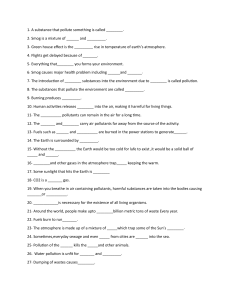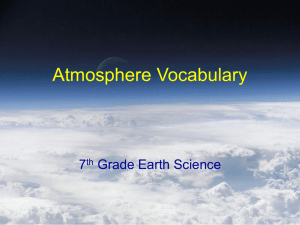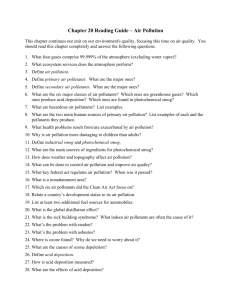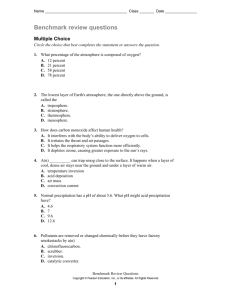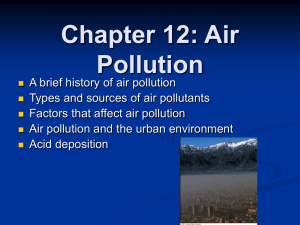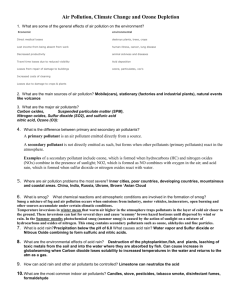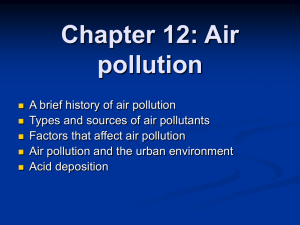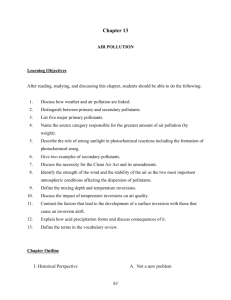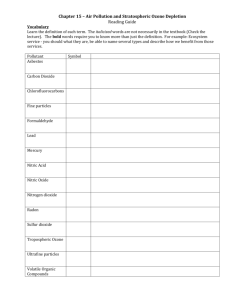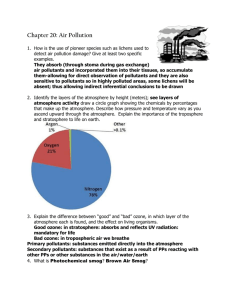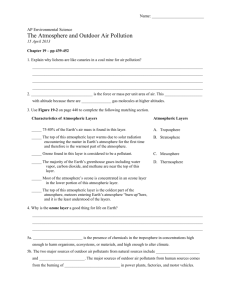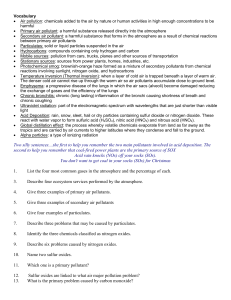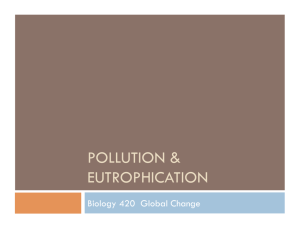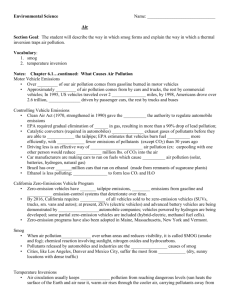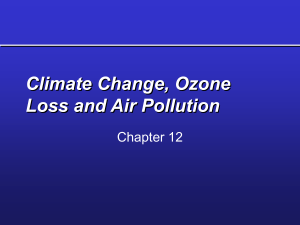Sources of Air Pollution
advertisement
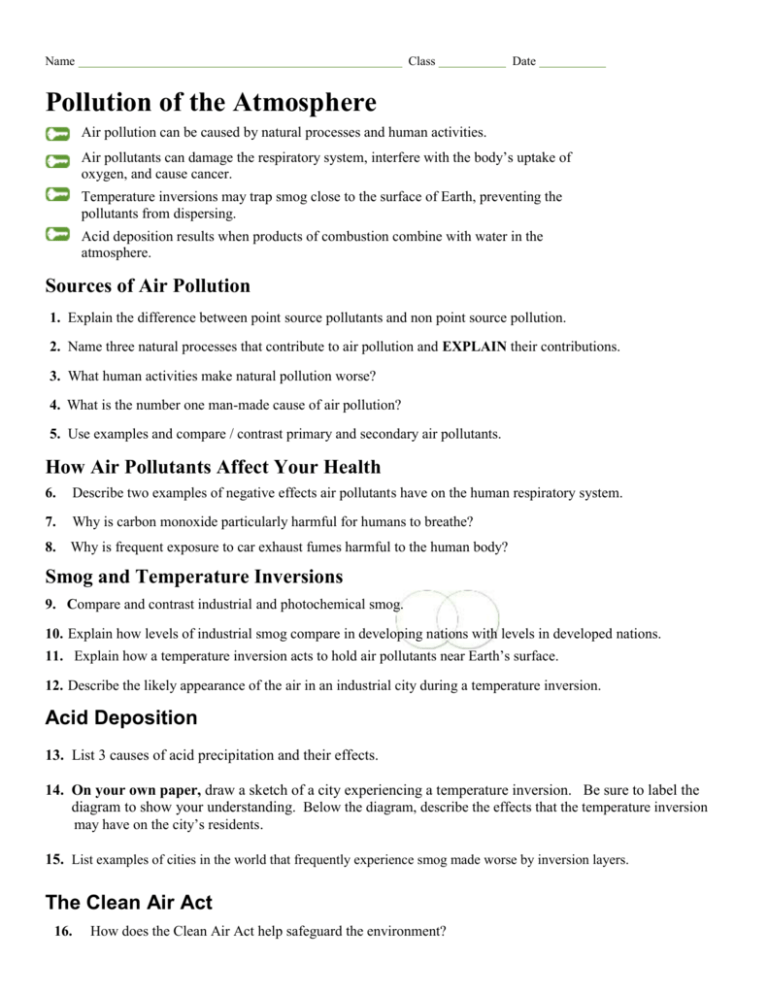
Name Class Date Pollution of the Atmosphere Air pollution can be caused by natural processes and human activities. Air pollutants can damage the respiratory system, interfere with the body’s uptake of oxygen, and cause cancer. Temperature inversions may trap smog close to the surface of Earth, preventing the pollutants from dispersing. Acid deposition results when products of combustion combine with water in the atmosphere. Sources of Air Pollution 1. Explain the difference between point source pollutants and non point source pollution. 2. Name three natural processes that contribute to air pollution and EXPLAIN their contributions. 3. What human activities make natural pollution worse? 4. What is the number one man-made cause of air pollution? 5. Use examples and compare / contrast primary and secondary air pollutants. How Air Pollutants Affect Your Health 6. Describe two examples of negative effects air pollutants have on the human respiratory system. 7. Why is carbon monoxide particularly harmful for humans to breathe? 8. Why is frequent exposure to car exhaust fumes harmful to the human body? Smog and Temperature Inversions 9. Compare and contrast industrial and photochemical smog. 10. Explain how levels of industrial smog compare in developing nations with levels in developed nations. 11. Explain how a temperature inversion acts to hold air pollutants near Earth’s surface. 12. Describe the likely appearance of the air in an industrial city during a temperature inversion. Acid Deposition 13. List 3 causes of acid precipitation and their effects. 14. On your own paper, draw a sketch of a city experiencing a temperature inversion. Be sure to label the diagram to show your understanding. Below the diagram, describe the effects that the temperature inversion may have on the city’s residents. 15. List examples of cities in the world that frequently experience smog made worse by inversion layers. The Clean Air Act 16. How does the Clean Air Act help safeguard the environment? 17 . In what way does the Clean Air Act set standards for air quality in regard to human health? 18. Under the Clean Air Act, which agency sets nationwide standards governing air quality? 19. Explain how the provisions of the Clean Air Act have affected the amount of air pollution in the United States. 20. Which provision of the Clean Air Act do you believe has had the greatest impact on reduction of air pollution? Explain. 21. Ozone is considered a pollutant in smog in what layer of the atmosphere? 22. Which layer of the atmosphere contains the ozone layer? 23. During what time of the year does the ozone concentration over Antartica decrease? 24. How has the Montreal Protocol in 1987 affected the use and production of chloroflorocarbons? 25. Describe how ozone over Antarctica changed during the period from 1975 to 1985. 26. In the 1970s, what did scientists Sherwood Rowland and Mario Molina identify as the probable cause of ozone depletion? 27. What do chlorofluorocarbons contain? Give two examples of how CFCs were commonly used in the 70s & 80s 1 28. What kinds of health concerns did people have that contributed to the signing of the Montreal Protocol? 29. What do the provisions of the Montreal Protocol focus on? Explain why it was necessary to have an international agreement to address CFCs? 30. What do scientists expect will happen to the ozone concentrations in the near future?


